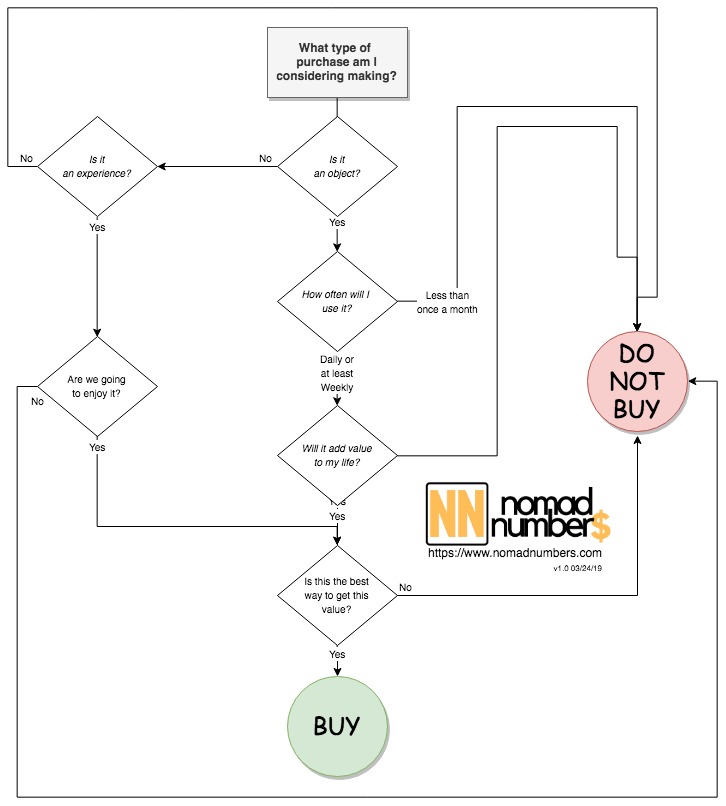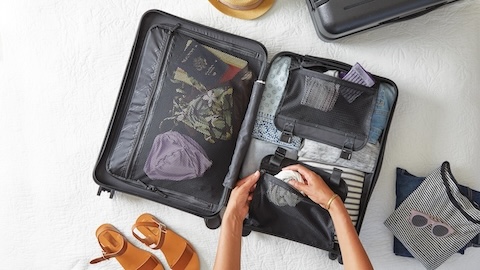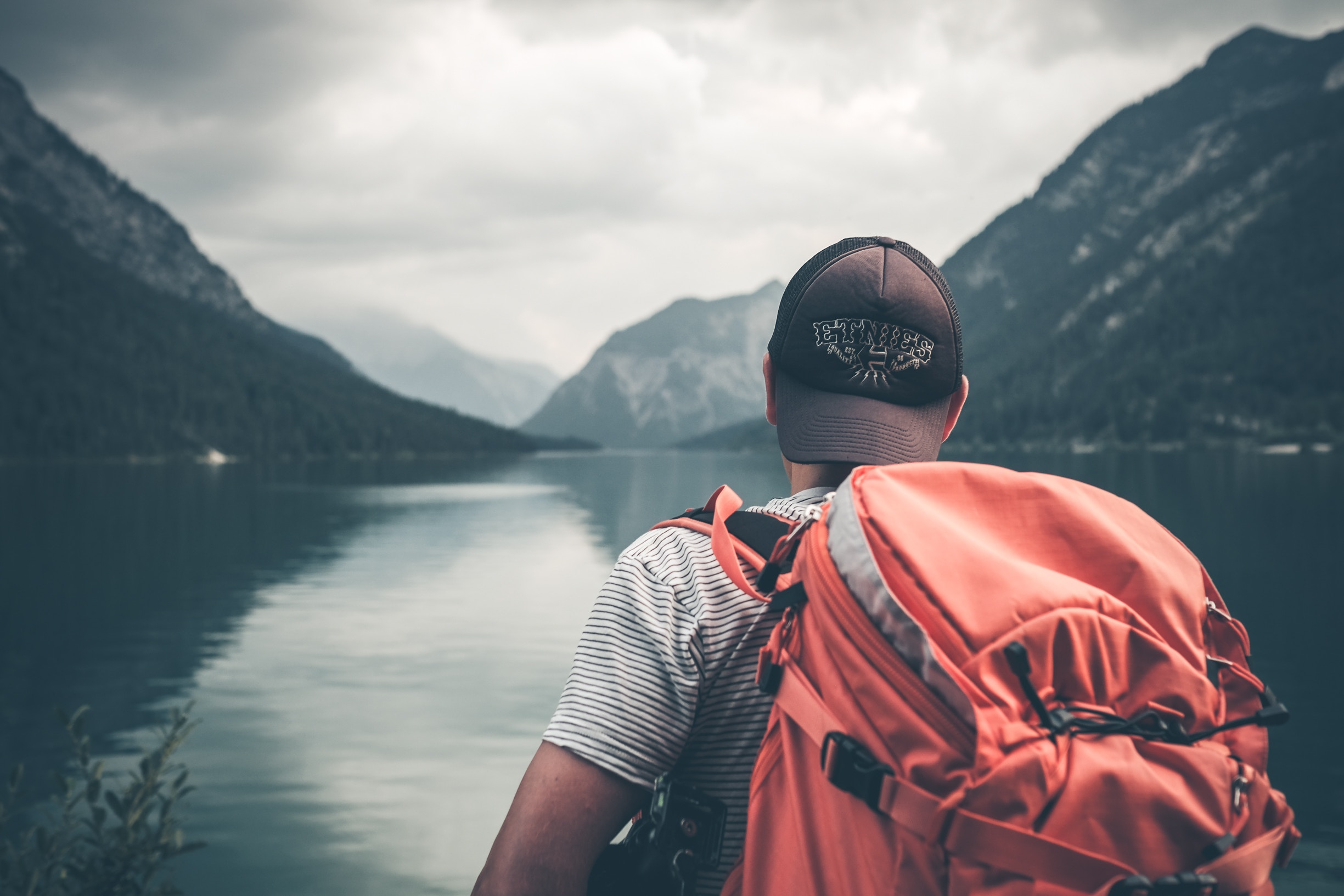I recently stumbled upon an article on a personal finance blog about spending habits that made me think about our own. As both aspiring minimalists and slow travelers, we like to control our spending since we have limited space on what we can carry and are traveling quite extensively. So I thought it would be interesting to share what we currently spend money on, how we decide what to spend money on and how much money we feel comfortable spending. Ready to dig in?
Some links to the products mentioned below are affiliate links, meaning that if you click and make a purchase, Nomad Numbers may receive a commission at no additional cost to you. For more information please review our disclaimer page.
What do we spend money on?
The money we spent can be categorized in a few categories (we cover in depth such expenses in both our destination reports and weekend guides). These categories are:
- Accommodation – mostly AirBnb that have helped us saved hundreds of dollars.
- Groceries – the food we cook at home and that we usually get at a farmer’s market or grocery store.
- Eating out – the food we enjoy outside (from a 3 course meal at a restaurant to a snack bought on the street).
- Transportation – this fits into two categories. Local transportation to help us explore the place we are visiting and commute transportation (mostly through flights that we manage to get for (almost) free) to help us go from destination A to destination B.
- Activities – these are usually experiences, they include things like a boat cruise, vehicle rentals, park entrance fees.
- Others – this includes phone plans (Google FI), health coverage, one-time replacement expenses as well as discretionary expenses (like gifts).
How do we decide what to spend money on?
As aspiring minimalist and slow travelers, we spend money on two types of purchases: stuff & experiences. The rest are expenses to cover our “basic needs” (paying rent, groceries, health insurance…) and we won’t cover them here.
Stuff
Because we travel exclusively with carry on only, we are forced to be very selective about what we purchase as we are limited by what our luggage can carry. We like to optimize for items that are light, multi purpose, long lasting, sustainable and environmentally friendly, which doesn’t necessarily mean that such items are cheap.
If we want to get stuff, the first question we ask ourselves is “how often we will be using such item?”. If the answer is daily or weekly then we are okay to move forward. If we think we will use it just once (or less than once a month) then we don’t make the purchase.
What about items where we aren’t sure yet? Usually we will likely not need an item if we don’t know how often we are going to use it. There might be cases when something new comes up and we want to see if it can fill a gap in our lives. In this case, we look at the return policy and make sure we can use this item for a few weeks and then postpone the decision right before the return policy expires.
The second question we ask ourselves is “Will this add value to my life?”. This is an important question because we can use something everyday (like a smartphone) but this doesn’t often mean this is really adding positive value to our lives. Actually more and more people are trying to reduce their digital clutter and a smartphone represents a pretty big chunk of this clutter.
The third and last question we ask ourselves is “Is this the best way to get this value?”. This question lets us think about alternatives. Let’s say you want to track your steps to stay active. Would a pricey Apple Watch Series 5 be a better fit than a cheap fitness tracker?
If we answer yes to this last question then we usually go ahead and make the purchase.
Experiences
Experiences is an important part of travel. However we don’t have to see every site, museum, rocks or take every tour in a city but rather being thoughtful about what we want to do and appreciate. For us slow travel is more than just a big “vacation”, it is our lifestyle and we don’t need to spend for convenience, social pressure or to check off bucket lists items.
If we want an experience (whether it is a nice meal at a fancy restaurant on the beach, a stay at an all inclusive resort on the Maldives, a sailing cruise in the caribbean or a sunset boat trip) the first question we ask ourselves is “Are we going to enjoy it?”. This question is important because while the experience itself sounds great, it usually comes with a lot of people around it that can make it less enjoyable. Let’s imagine that we want to take a tour to hit a few cool sites and then we realize that there are five other tour companies that pack dozen of buses to take the same route. In this case, are we going to enjoy this experience overall with all these extra people around us? Probably not.
The second question we ask ourselves is “Is this the best way to get this experience?”. This question let us think about alternatives. If we stick with our tour example, while this might be super crowded due to all the tour companies taking the same route/schedule, can’t we manage our own transportation and hit the sites at our own pace?
If we answer yes to this last question then we usually go ahead and make the purchase.
This is pretty much how we decide what to spend money on. I’m sure I might have missed some edge cases, so feel free to let us a comment about common purchases that might not fit into our model.
Here is a graph that recap our decision process:

How much money do we feel comfortable spending?
We don’t have a hard limit (within acceptable reason of course) on how much money we can spend. First and foremost, we follow our decision tree to make sure the purchase we want to make will add value to our lives. Then we will do research online to find the most affordable version on the item but we usually don’t try to get a different item (unless it has similar benefits to the item we have been looking for). We don’t mind getting refurbished items as long as they come with a similar warranty & return policy. Having purchased refurbished electronics before, I never had any longevity issue with such products, compared to the brand new version. The last step we use to reduce the cost further is to look for promotional codes online. These days it is pretty easy to find promotions when shopping online and Mrs. Nomad Numbers has gotten pretty good at it, saving us hundreds of dollars in 2018 alone because a 5-10% additional discount quickly adds up!
Our Bottom line
When it comes to spending, we don’t look so much at the price tag but rather the value of anything we want for ourselves. As aspiring minimalists, we’ve been surprised that we don’t need a ton of stuff to live a happy life. (As an example, we travel the world only with carry-on that has definitely a limited capacity and are worth less than $10,000 each). And what about experiences? Well it turns out that we buy a lot of them but they don’t have to be expensive, especially when you embrace slow travel.
How about you? How do you like to spend your money? Do you go on shopping sprees, luxury vacations? Be honest and tell us about it in the comments.



12 Comments
Life Outside The Maze · March 25, 2019 at 5:45 am
I Love the flow chart for making spend decisions haha. Cool post and thanks for sharing NN. I too have been thinking about this topic lately 😉 best of luck on your next stop. If you come through Denver ever let me know, would love to meet up
Mr. Nomad Numbers · March 25, 2019 at 4:12 pm
Yeah when it comes to decision making nothing beat a flow chart isn’t it? And thanks also for the offer. As we are going to be in California for probably 1-2 months we have been considering traveling a bit in the US so if we plan to hit Denver we will definitely let you know!
Wendy · March 25, 2019 at 4:08 pm
This post resonates! We are also traveling out of a suitcase & backpack each, and don’t have set budgets in place. Mindset on spending is more important!
Mr. Nomad Numbers · March 25, 2019 at 5:33 pm
Hi Wendy! Glad you enjoy our post and I’m happy to have discovered a fellow traveler & minimalist! I took a peak at your blog and it looks like we’ve almost ran into each other last summer since we were in Quebec too (http://nomadnumbers.com/tag/quebec)!. What are you guys plans for 2019?
Wendy · March 27, 2019 at 12:40 am
Small world! We just finished a South America jaunt across Argentina, Uruguay, and Chile. Back in the US for a few month, taking a break from traveling, and will be in France this summer (also a French/American duo here!). TBD for the second half of the year! Maybe our paths will cross!
Dragon Guy · March 30, 2019 at 9:40 pm
Over the last couple of years we’ve definitely focused more of our spend on experiences instead of stuff. And even with experiences we are being smarter with our spend. We enjoy playing tennis and had been taking private lessons. However, we recently stopped the lessons and just go play on a free neighborhood court. This saves us a few thousand dollars a year. Additionally, we’ve been more selective on when and where we travel, picking locations almost purely based on good airfare. Over the last year and a half we went to San Diego, Thailand, and Australia purely based on seeing good deals, and not because we specifically planned to go to those locations for vacation. When we are at our destination we are finding we enjoy just being out and about walking around and experiencing nature, which is generally free. We were in Sydney, Australia for 5 nights and aside from food and transportation, we didn’t spend any money on activities. Every thing we did was free and outdoors which was amazing!
Mr. Nomad Numbers · March 31, 2019 at 4:58 pm
Thanks for the comment DragonGuy! We also prefer experience over stuff especially since there are only so much things you can buy that can add value to your life. We also enjoy doing activities that are free. Whether it’s hiking, taking on a free city tour or simply reading/swimming at the beach like we did last month as we spent 4 weeks in Aruba.
TheFrugalChoice · March 31, 2019 at 4:19 pm
Clever flowchart and indeed covers most things I try to think about before making a purchase as well!
Mr. Nomad Numbers · March 31, 2019 at 4:59 pm
Thank you TheFrugalChoice for stopping by! Glad you enjoyed our flowchart 🙂
Would you rather stay at home or live in Aruba for less? – Nomad Numbers · April 1, 2019 at 6:07 am
[…] How we spend our money […]
[Interview #006] Semi-nomadic lifestyle through minimalism and house sitting - Nomad Numbers · January 19, 2020 at 7:37 am
[…] How we spend our money […]
Destination Report: Koh Lanta - Part Two: Cost of Nomad Living - Nomad Numbers · March 2, 2020 at 9:15 am
[…] How we spend our money […]